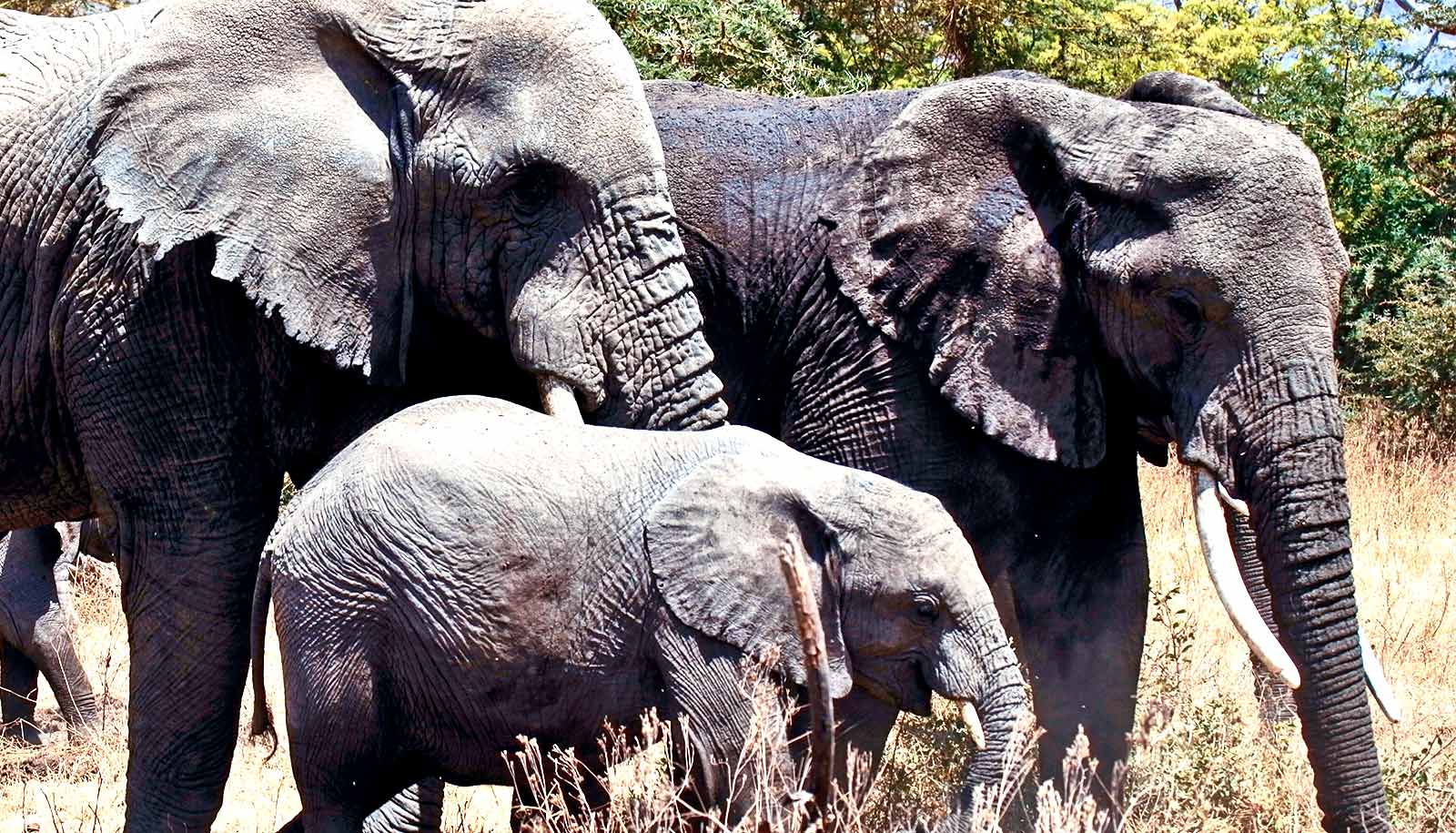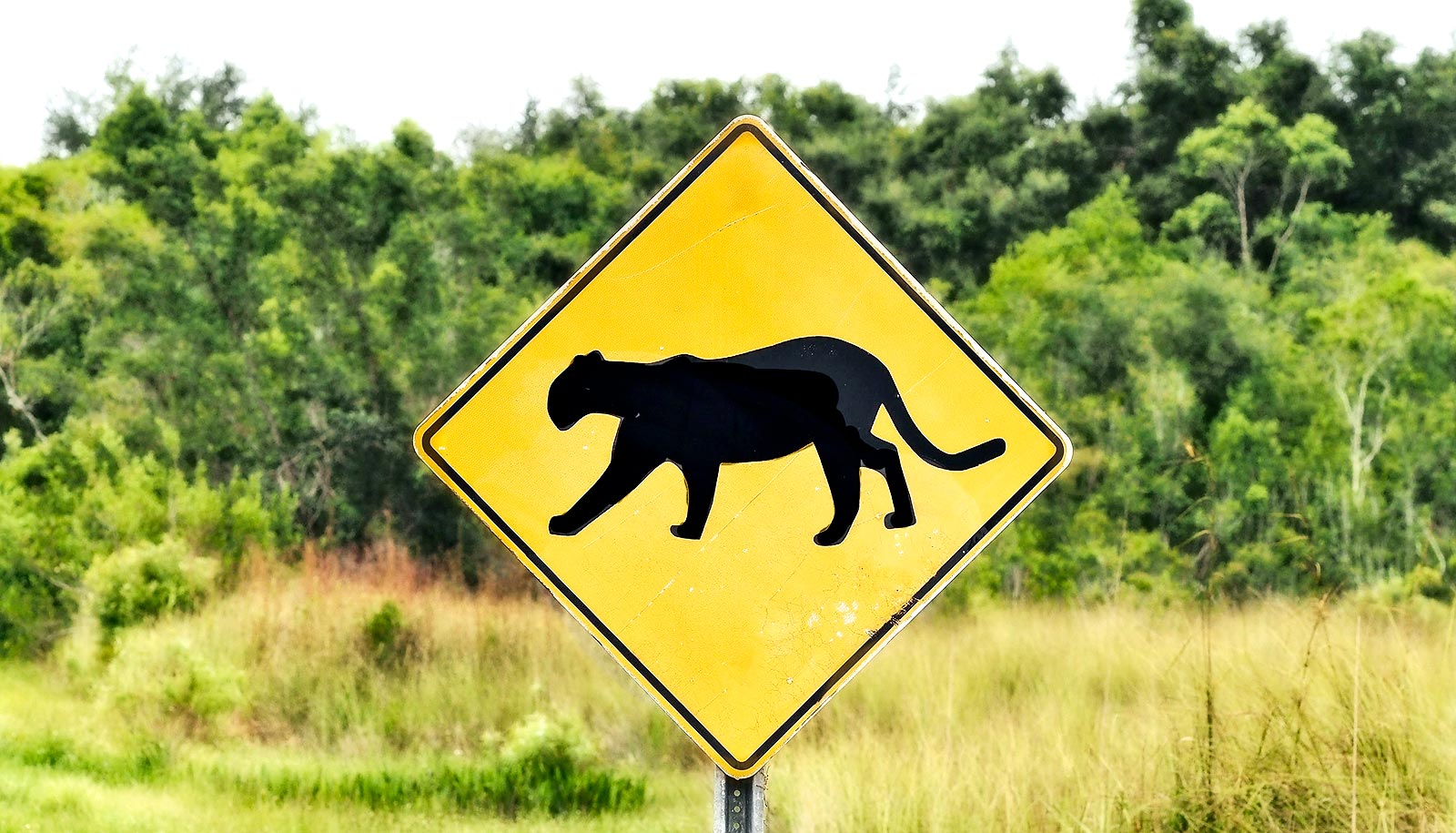Tigers in Nepal were two to three times more likely to cross highways during COVID-19 lockdowns than before it, a new study shows.
The researchers used the nationwide lockdown as a natural experiment to test the responses of two GPS-collared tigers to dramatic reductions in traffic volume along a national highway.
“Our results provide clear evidence that vehicle traffic on major roads impedes tiger movements, but also that tigers can respond quickly to reductions in human pressures,” says lead author Neil Carter, a conservation ecologist at the University of Michigan’s School for Environment and Sustainability.
“The fact that both tigers immediately changed their behaviors is encouraging because it means that mitigating road impacts can lead to quick conservation benefits by enabling tigers to more freely roam their territories.”
The study in the journal Global Ecology and Conservation is the first to use GPS collars to assess road impacts on tigers, Carter says. It’s also the first systematic research on Nepalese tigers using either radiotelemetry or GPS tracking since the 1980s.
Roads pose a major and growing challenge for the conservation of endangered species. Carnivores are particularly susceptible to the impacts of roads because they often require large habitats, have low reproductive output, and occur in low densities.
Fewer than 4,500 tigers remain in the wild. They are found mainly in South Asia and Southeast Asia, regions that will experience accelerating pressure from human development in coming years.
A 2020 study that Carter led found that nearly 15,000 miles of new Asian roads will be built in tiger habitat by mid-century, deepening the striped feline’s extinction risk and highlighting the need for bold new conservation measures now.
Nepal is experiencing rapid transportation-infrastructure growth in its southern lowlands (known as the Terai), a region that is home to all of the country’s roughly 250 tigers.
The ongoing widening of the 639-mile East-West (Mahendra) Highway from two lanes to four is especially concerning for biodiversity conservation because the road bisects all tiger-bearing parks in Nepal, as well as important habitat corridors and bottlenecks.
The widening project is being carried out with little mitigation of its impacts on tigers, which is likely to have severe consequences for the big cats, their prey, and other wildlife in national parks and adjacent forests, according to the researchers. The study includes several recommended mitigation measures.
For the study, Carter and his colleagues equipped two wild tigers, one adult male and one adult female, with GPS collars to record detailed information about their movements and behaviors around the East-West Highway prior to the lane-expansion project.
The male tiger was captured and collared in Parsa National Park on February 14, 2021. The female was captured and collared in Bardia National Park on March 26, 2021. The East-West Highway passes through both parks.
During the study, the government of Nepal implemented its second national COVID-19 lockdown, from April 30 to September 1, 2021. Road use was dramatically reduced nationwide as trade was postponed, many businesses were closed, and social activities were heavily restricted.
In Parsa National Park, average daily traffic along the East-West Highway declined 85% during the lockdown. No traffic data was available for the lockdown period in Bardia National Park, but the researchers assumed that reductions were comparable.
The study revealed clear differences in movement patterns between the two tigers.
In the month after the lockdown began, the male tiger’s home range more than tripled in size to 213 square miles. He crossed the highway significantly more times during the lockdown than in the pre-lockdown period, and significantly more times at night than during the day.
The female tiger, in contrast, was less affected by the highway, though she did cross more easily during the lockdown. In addition, the female’s home range was at its maximum in the month before lockdown (April 2021) and subsequently shrank during the first month of lockdown.
Carter and his colleagues say the differences in movement patterns between the two tigers likely reflect differences in highway traffic patterns and regulations, as well as ecological conditions, at the two sites.
The female tiger in Bardia National Park lives in an area where traffic speed is tightly controlled using a timed entry/exit system enforced with fines by armed guards. The lower traffic volume and strict regulation of speed in Bardia likely reduced overall disturbances from vehicles on the female—even before the lockdown.
The researchers suspect the female became habituated to the highway traffic in Bardia and therefore displayed a limited behavioral response during the lockdown.
The male tiger, in contrast, occupied an area in Parsa National Park where speed limits on the highway were not enforced and where traffic is constantly shipping goods back and forth between Nepal and India at all times of the day.
The highway acted as a major barrier to the male’s movements, as evidenced by his pre-lockdown avoidance of all areas near it. That changed during the lockdown. The male began visiting locations near roads at night and also crossed the highway more frequently, especially at night but even a couple of times during the day.
With greater use of areas near roads and increased likelihood of crossing the highway, the male tiger greatly expanded his home range to the west side of the highway immediately following the onset of lockdown.
“This expansion suggests that the high traffic pre-lockdown had constrained the male tiger’s movements to one side of the highway,” says coauthor Amy Zuckerwise, a doctoral student at the School for Environment and Sustainability. “Cessation of traffic released the tiger from those constraints to roam more broadly.”
The researchers acknowledge that they are unable to make inferences about population-level responses to road networks based on the GPS tracking of two wild tigers. However, it’s now clear that the highway and its road traffic affect the space use, habitat selection, and movements of individual tigers.
The research team intends to eventually track six to eight Nepalese tigers, Carter says. In the meantime, the authors urged policymakers in Nepal to mitigate the expected impacts of the highway widening project “before it is too late.”
In Parsa National Park, where unregulated road traffic impeded the male tiger’s movements, installing wildlife crossing structures such as underpasses and overpasses would enable tigers and their prey to move across the highway more freely.
Likewise, enforcing speed limits on the highway through Parsa National Park—using signs, speed bumps, speed traps, and strict fines for speed-limit violations—would decrease the human disturbances associated with traffic, the authors wrote.
All capture, handling, and immobilization of tigers was done in accordance with the University of Michigan IACUC Protocol #PRO00010077, recommendations in the ARRIVE Guidelines and the “Operational manual for the satellite telemetry on Royal Bengal tiger 2021” approved by the Nepal Department of National Parks and Wildlife Conservation.
The authors thank the Nepal Department of National Parks and Wildlife Conservation, Bardia National Park, and Parsa National Park for granting permission to conduct the research. They also thank the field technicians from the National Trust for Nature Conservation in Nepal for the immobilization and GPS-collaring of the tigers.
The US Fish and Wildlife Service Rhinoceros and Tiger Conservation Fund.
Source: University of Michigan



